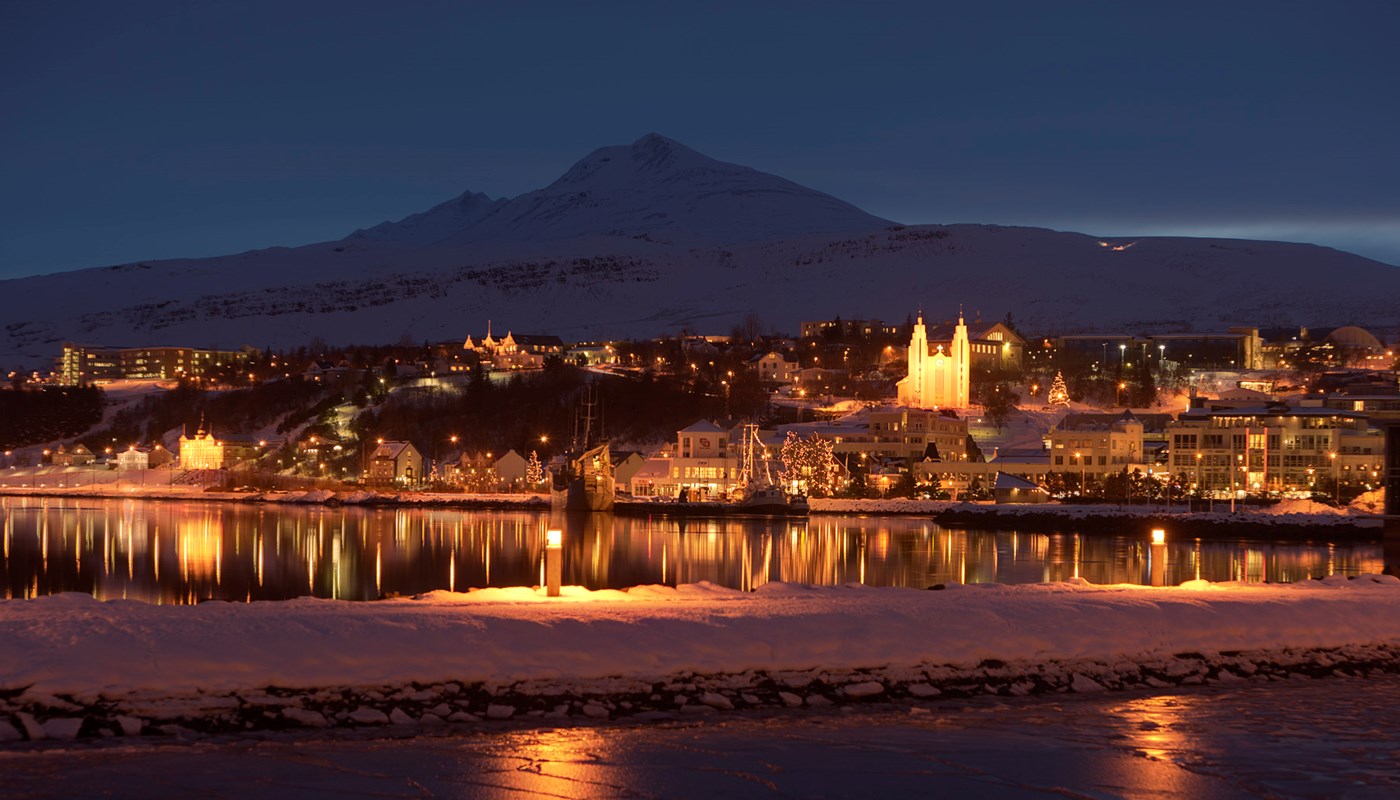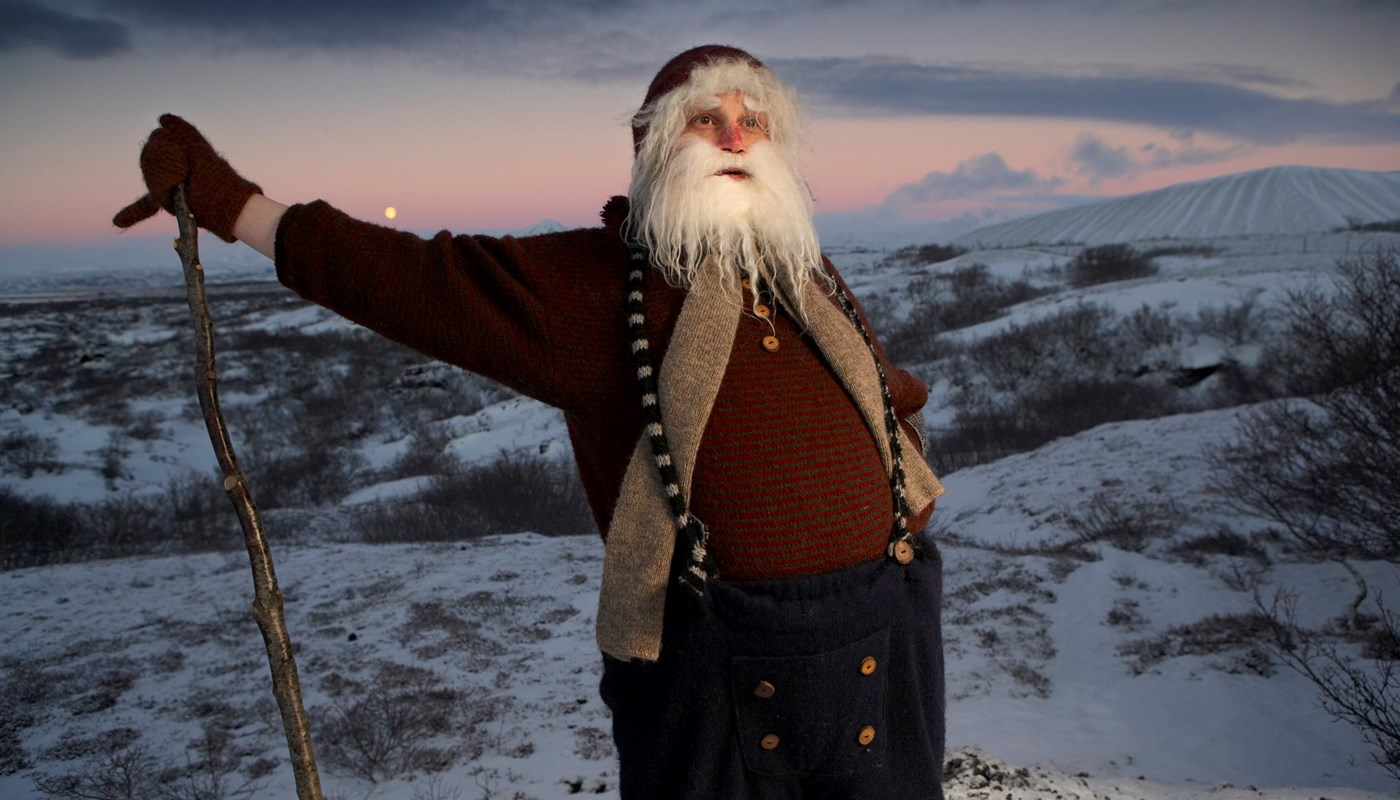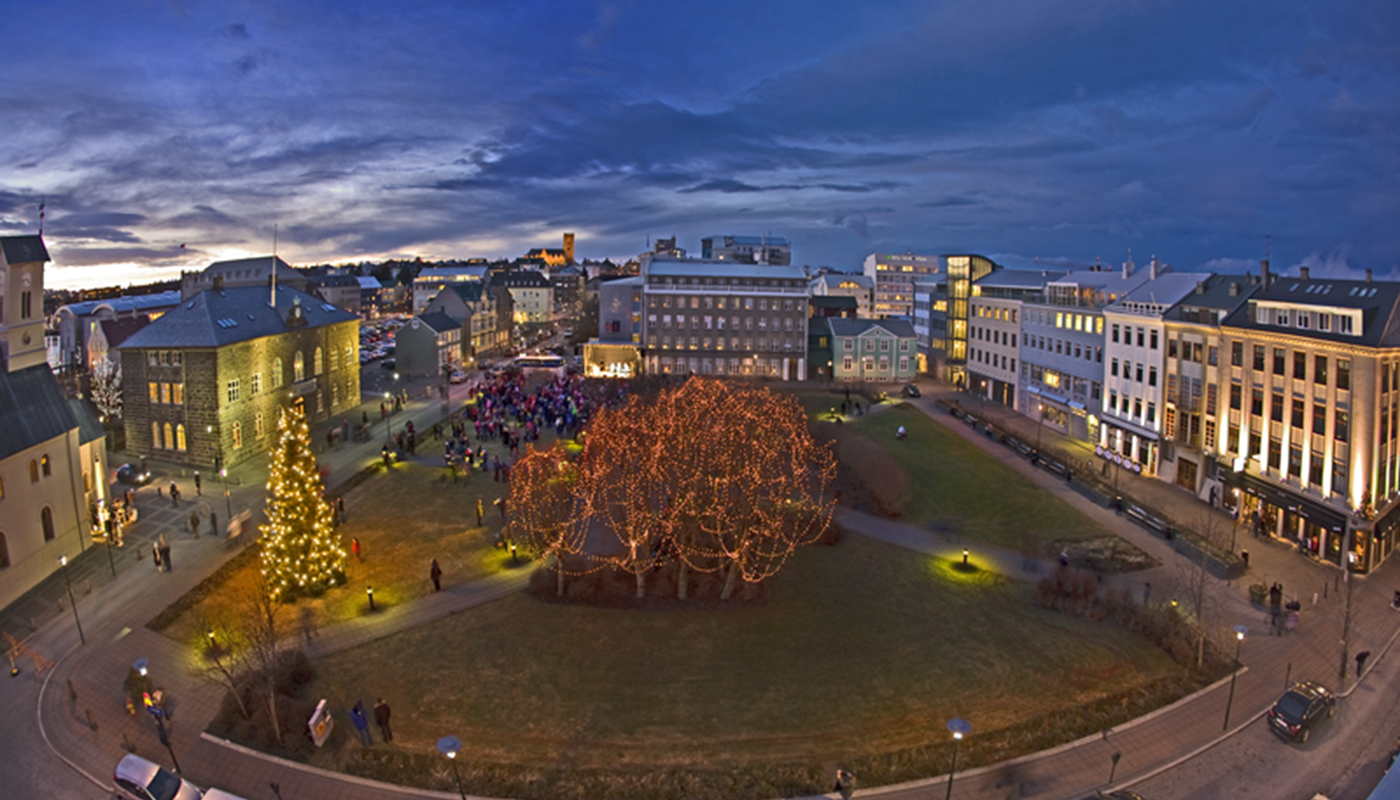IDEAL FOR HOLIDAY CELEBRATION
Iceland is the ideal place to celebrate the holidays. Icelandic culture is rich in Christmas traditions, and, to be honest, for a festival of lights, darkness is an asset.
The Icelandic Christmas period is an intriguing mixture of religious practice and traditional folklore, beginning on December 23rd and ending on Epiphany, 6th of January. In between, there is a whole lot of food to be eaten, people to meet and fireworks to be launched. This celebration is deeply rooted in most Icelanders, since it coincides with the darkest period of the year, and the time when the days start to grow longer again. As a result, Icelanders add extra emphasis on bringing light into their Yuletide festivities. Icelanders decorate their houses with bright Christmas lights both inside and outside. And, as in many other parts of the world, a brightly-decorated Christmas tree is an important living room fixture.

13 SANTAS
Indeed, Christmas in Iceland is a fare quite different from the version celebrated in other countries. For starters, it includes not one, but 13 Santa’s, who are more passionately referred to as Yule Lads. Rather than flying in from the North Pole via a sleigh pulled by reindeer, Iceland’s Yule Lads live in the mountains and walk to town one by one until Christmas Eve to bring children small gifts.
This was not always the case. According to Icelandic folklore, their vices may have something to do with some unfortunate genetics and/or upbringing, being the children of a three-headed ogress called Grýla—whose favourite dish is naughty-kids stew—and her third husband, a comparably ugly ogre called Leppalúði. Perhaps even worse though is their cat, jólakötturinn, who is rumored to eat children who don’t receive any new clothes to wear on Christmas Day.
ST. ÞORLÁKUR'S MASS
Þorláksmessa (st. Þorlákur's Mass) is the day before Christmas, or December 23rd, named after Þorlákur Þórhallsson, a 12th century priest in Iceland. He died on this day in 1193. He was canonized by Althingi (the Icelandic Parliament) in 1198. The dish of Þorláksmessa day is fermented skate. As it was traditionally the last day of the Christmas fast, no one was supposed to eat meat. The tradition of eating skate on December 23rd is still very popular in Iceland, despite the strong smell of ammonia which accompanies the putrefied fish. This is usually the biggest day of the year in Icelandic commerce, as people flock out to do their last minute Christmas shopping.
NEW YEAR'S EVE
New Year's Eve is probably the biggest party of the whole year. On this night everyone is allowed to light fireworks, which requires special permission from the authorities on other occasions. Icelanders make sure they take full advantage of that. Fireworks are lit all night long, reaching the high point at midnight, when the sky lights up for a few minutes. At the same time the fire trucks and harbored ships ring their bells and blow their horns to welcome the new year. It is certainly the grandest display of fireworks you will ever see. After midnight, people gather either for parties in each other homes or downtown, where they drink the night away until the early hours of the morning.
CHRISTMAS IN ICELAND
Christmas is Iceland's longest holiday. Almost everything is closed from noon on Christmas Eve until December 27th. The main celebration begins at six o'clock on Christmas Eve. The family dines together in the evening and exchanges presents. In the following two days people gather to meet with friends and family.
Icelandic Christmas are historically two celebrations: Celebrating the birth of Christ and celebrating the beginning of the lengthening daylight hours. The Icelandic word for Christmas, jól, contains no reference to Christ or to the church. It is a Norse word and also existed in Old English as Yule.
The custom of celebrating Christmas in the evening on December 24th is thought to be a development from an old Catholic custom when people would have a wake the night before big church holidays. A new day was believed to start at 6 p.m., which is when Icelanders traditionally either go to church or begin the festivities at home.
Icelanders celebrate 13 days of Christmas. The period starts on December 24th and ends on January 6th. This tradition is believed to extend back to the 4th and 5th centuries in Europe where the birth of Christ was celebrated on December 25th and his christening and the three wise men were celebrated on January 6th.
DECORATIONS AND PREPARATIONS
Decorations are a serious matter for most. The most common decoration are Christmas trees, which are either live or artificial. The trees are decorated in similar manner to the United States, i.e. with lights, garland, ornaments etc.
Another common Christmas decoration is the Advent light. There are two popular types of Advent lights in Iceland; the Advent wreath, with four candles, one for each Sunday of the Advent. This is a German custom and was first seen in Iceland in the 1930s, but popularized in the 60s and 70s.
The other type of Advent light are seven candles arranged in a triangle-shaped candelabra. These are mostly electric light nowadays. They are very popular and many families have more than one.
Sending Christmas cards is an important tradition in Iceland. Many families send dozens of cards each Christmas and receive dozens in turn. This is sometimes the only correspondence between distant friends or family members. Apart from Christmas greetings, it is traditional to at least thank for the year that is about to pass and, more often than not, comment about meeting next year.

THE YULE LADS
Icelanders have not one, but 13 Santas, or Yule Lads. These lads are not related to Santa Claus in any way. Descended from trolls, they were originally used to scare children. In the last century, however, they have become a lot friendlier.
The number of Yule Lads has varied throughout the centuries but now they are consistently 13. The number 13 and their current names were first seen in a poem in the 18th century, published in Jón Árnason's folklore collection of 1862. Their names are:
- Stekkjastaur (Sheep-Cote Clod)
- Giljagaur (Gully Gawk)
- Stúfur (Stubby)
- Þvörusleikir (Spoon-Licker)
- Pottasleikir (Pot-Licker)
- Askasleikir (Bowl-Licker)
- Hurðaskellir (Door-Slammer)
- Skyrgámur (Skyr-Gobbler)
- Bjúgnakrækir (Sausage-Swiper)
- Gluggagægir (Window-Peeper)
- Gáttaþefur (Doorway-Sniffer)
- Ketkrókur (Meat-Hook)
- Kertasníkir (Candle-Stealer)
As you can tell from these names, the lads are very mischievous and they have retained their unique characteristics to this day. They live in the mountains with their parents, Grýla and Leppalúði. They come to town, one by one, in the days before Christmas. The first one arrives on December 12th and the last one on December 24th. Formerly, they tried to pilfer their favorite things or play tricks on people (hence their names), but now their main role is to give children small gifts. Every child in Iceland puts their best shoe on their window sill on December 12th and receives a small gift from each lad when he comes to town. But beware not to be naughty or the lad might just leave a rotten potato in your shoe!
Their original clothing were rags that are similar to farmers' clothes in the 18th century and they are often seen carrying their favorite food. Nowadays they are usually seen in familiar red clothing with white beards and black boots.
THE CHRISTMAS CAT
An old Icelandic folklore states that everyone must get a new piece of clothing for Christmas. If not, they would be eaten by the malicious Christmas Cat. The Christmas Cat is Grýla's cat (see Yule Lads) and every effort was made to make a new piece of clothing for each household member to ensure that no-one would be caught by the Christmas Cat.
More Themes
The Place for Adventure
Iceland remains largely uninhabited, with more than half of its 320,000 inhabitants living in the capital city. In fact, a mere twenty-minute drive from Reykjavík center takes you out of the hubbub of city life and into the seclusion of Iceland's spectacular landscapes, which inspire adventures from its shores to its mountaintops.
Culture
Iceland was the last country in Europe to be settled. To this day, it is one of the most sparsely populated countries in the world. Located in the middle of the North Atlantic, Iceland was settled by emigrants from Scandinavia and the British Isles in the tenth century. Due to Iceland's geographical location, it was mostly outside the influence of contemporary culture in Europe and America, until the late nineteenth century.
Mysterious Iceland
Iceland is home to the largest glaciers in Europe, as well as some of the world's most active volcanoes, and is widely known as "The Land of Fire and Ice". But Iceland escapes definition. It is also the land of light and darkness. Its location, just below the Arctic Circle, makes for long summer days with near 24-hours of sunlight; offset by short winter days with very little sunlight at all. Fortunately, while winters in Iceland are dark, they are relatively mild and play host to one of nature's most spectacular exhibitions of beauty; the Aurora Borealis.




